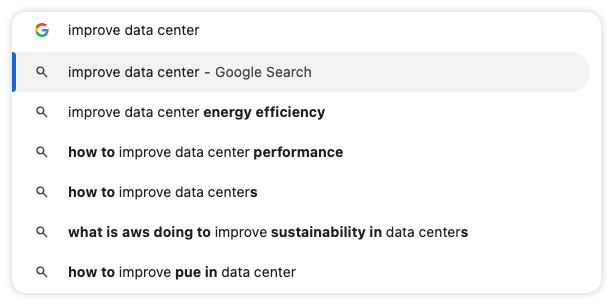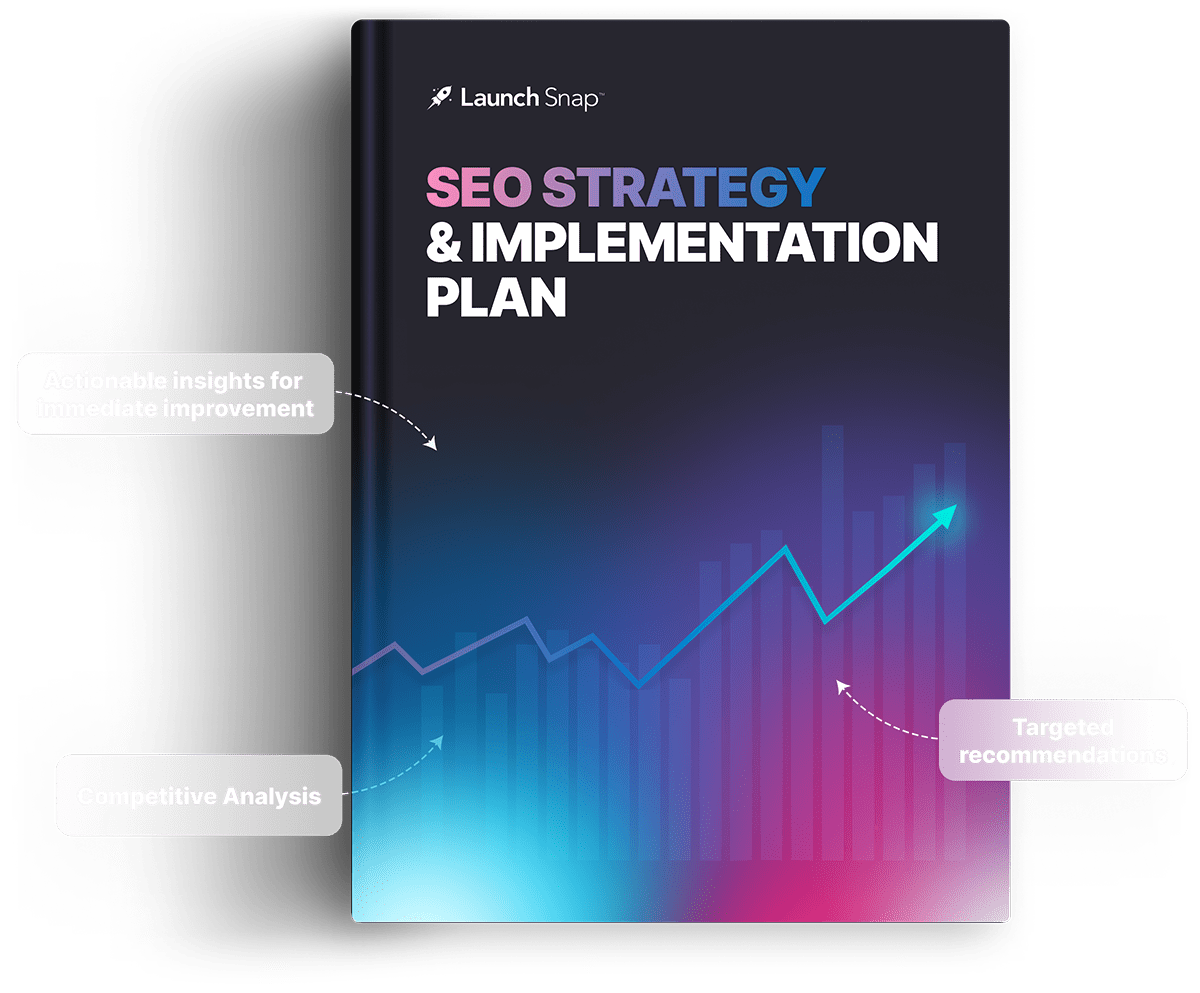Crafting a B2B Content Strategy for Enhanced SEO
Many companies make amazing content that resonates with potential customers but these prospects never find them. Alternatively, some companies do a great job of getting lots of organic clicks from keywords that don’t bring in qualified leads. If you want to rank for organic search terms that will make a difference to your bottom line, you need an aligned content and SEO strategy.
What is the Most Important Factor in B2B SEO?
The cornerstone of any successful B2B SEO content strategy is creating high quality content that resonates with the people that you are targeting.
What is the Best Content Strategy for B2B SEO?
The ideal B2B content strategy finds the perfect balance between creating content your audience wants and the available SEO opportunities. One step further is a strategy that also aligns with the initiatives of your content creators or marketing department. This means that you meet your business goals you create content that resonates with your audience (all of which signals search engines the value of your content) and you increase your organic search rankings which increases traffic with bottom funnel ready buyers.

Step 1: Deep Dive into Your Audience
A B2B audience can include many individuals involved in a complex buying journey, often with different requirements and unique pain points. In order to deeply resonate with them, you really need to understand their distinct point of view. Beyond who they are (job titles, roles, responsibilities), there are three main areas you’ll want to focus on from an SEO perspective:
Business Challenges and Pain Points
Take the time to map out their typical day. Find the parts of their job they like the most, the least and identify their main responsibilities. Find out what they would value most. Is it saving time or getting rid of repetitive tasks? Increasing effectiveness or accuracy? Do they need more detailed information, reliability, etc.
Content Consumption Preferences
Ascertain their preferred formats. Do they lean towards webinars or on-demand videos? Do they prefer to read long form or short form content? How technical do they like to go?
Decision-Making Process
Understand their level of authority and whom they need to convince to make a purchase decision.
Don’t Guess, Ask.
Cultivate curiosity rather than making assumptions. Engage with your existing customers and delve into their decision-making process. Inquire about their reasons for selecting your company, the challenges they aimed to address, the alternative solutions they contemplated, their rationale for choosing your solution over others, and the search queries they used to find their solution. This direct approach will provide valuable insights and deepen your understanding of your audience’s needs and behaviors.
Step 2: Align SEO Keywords with Audience Needs
Now that you truly understand your target audiences, the next step is to pinpoint the exact terms and phrases they use when searching for solutions online. Although tools like Google Keyword Planner, SEMrush, or Ahrefs offer a starting point, B2B search queries often require a more nuanced approach. At LaunchSnap, we’ve found adopting the customer’s viewpoint, really putting on their shoes, and conducting searches based on their likely queries and challenges is the most effective way to get accurate results.
Tip #1: Unbiased Results
Use an incognito window so you don’t get search results biased by your search history.
While conducting your search, observe the suggestions Google automatically provides as you type. For instance, entering “Improve data center” might prompt Google to complete your query with options like “energy efficiency,” “performance,” “sustainability,” or improvements in KPIs such as PUE.

These suggestions are based on common searches by others, offering you multiple valuable insights:
- uncovering long-tail search queries relevant to your topic
- gauging the popularity of these queries
- identifying potential SEO-rich snippets to target
Dedicate sufficient time to this process and meticulously record your findings. After pinpointing a relevant search query, bookmark the top-ranking websites, noting whether they feature a webpage, case study, ebook, or webinar. Immerse yourself in the exploration, mirroring the journey a potential customer might undertake when seeking solutions.
However, be mindful of the potential for research to become overwhelming. Once you’ve established a few solid directions, pause your exploration; you can always return to it later. Next, transfer your compiled keywords to Google Keyword Planner, accessible through any Google Ads account. Input your selected keywords to discover what Google suggests, typically skewing towards shorter-tail keywords. Organize your keywords by subject and intent. Remember, lower search volumes are common for B2B keywords and should not deter you.
Don’t lose sight of the fact that clicks from 30 highly relevant keywords can be far more valuable than 30,000 clicks from people who don’t represent qualified leads.
Finally, refine your keyword selection to find the ideal options. Aim for keywords that combine higher monthly searches with lower competition, indicating both relevance and a high intent to purchase or learn. This strategy helps pinpoint the most effective keywords for your B2B SEO efforts.
Tip #2: Hidden Opportunities
Remember, even if some keywords do not align perfectly with your offerings, they can serve as a bridge to introduce your solutions. Instead of disregarding these keywords, optimize for them to draw visitors, then guide them toward your superior solutions. A blog article title example might be: “5 Reasons XYZ Technology Fails and What You Should Use Instead.”
Step 3: Crafting Relevant and Valuable B2B Content
Armed with in-depth audience understanding and relevant keywords, it’s time to create content that not only addresses your audience’s needs but is also optimized for SEO. Don’t just focus on single pieces of content; build a content ecosystem around your targeted phrases.
This can include:
- Detailed ‘Skyscraper Pages’
- FAQs for rich snippets
- Webinars and eBooks addressing industry challenges
- Insightful blog series
- Real-world case studies
- In-depth whitepapers
Key Attributes of Effective B2B Content:
High Quality and Relevant: Craft content that not only demonstrates your expertise and industry leadership but also builds trust and credibility. Avoid superficial content and aim for depth and value.
Prioritize Educational Value: Create content that is educational, informative, and addresses head-on the issues and questions your target audience faces.
Demonstrate Expertise and Authority: Your content should include supporting elements – testimonials, quotes, statistics, etc. – that lend credibility and show that you really know your stuff.
Balance User Experience with SEO: The best content is content that is exactly what your readers need, but its functionality is also something that search engines can navigate with ease. This means that you should make your content readable and engaging for humans, but you should also include headers, page titles, and meta descriptions.
Interconnect Your Content: Design your content ecosystem to facilitate easy navigation between related materials. Implement strategies like gating high-value content behind contact forms to generate leads and guide the audience through their discovery journey.
Promotion, Analysis and Refinement
Promoting your content: Utilize social media, email campaigns, influencer partnerships, Promote Your Content: Leverage social media, email, partnerships, and paid ads to widen your content’s reach.
Analyze Your Results: Utilize analytics tools to track performance metrics, informing future content and strategy adjustments.
Refine Your Strategy: Continually update and optimize your content based on analytical insights and evolving SEO trends.
Final Thoughts
A dynamic B2B SEO content strategy is not a one-time effort but a continuous cycle of understanding, creation, promotion, and refinement. By deeply understanding your target audience, aligning your content with their search behaviors, and continuously optimizing based on performance data, your strategy will not only attract the right audience but also lead to sustained growth and success. Remember, consistency and freshness in your content can significantly signal to search engines that your website is a relevant and authoritative source in your industry.
Struggling to find the balance between your content and effective SEO?
Let LaunchSnap tailor a content strategy that not only resonates with your audience but also aligns perfectly with SEO, ensuring your solutions find the right leads. Let’s transform your content into a powerful tool for growth and visibility.



